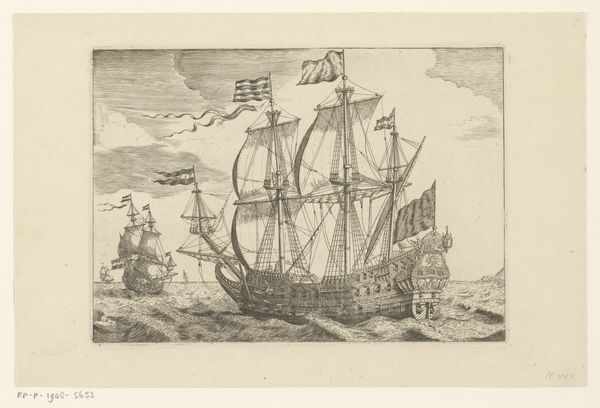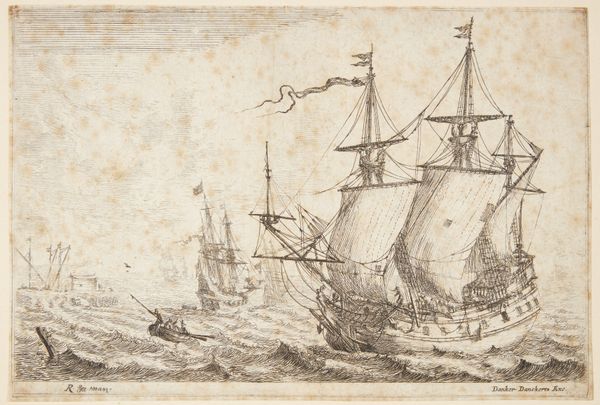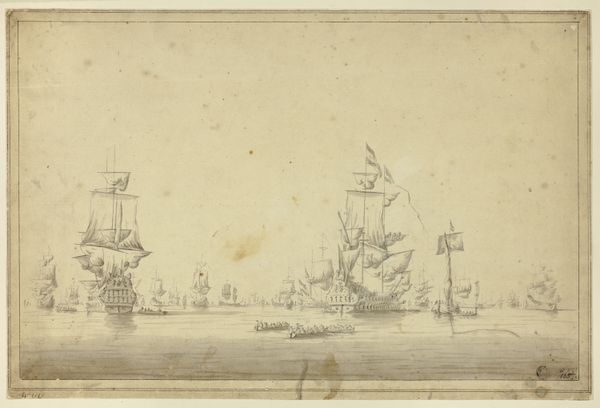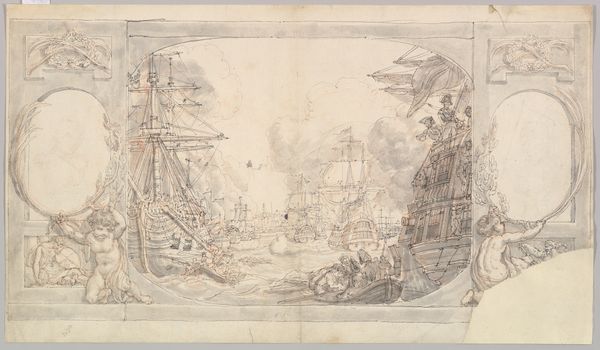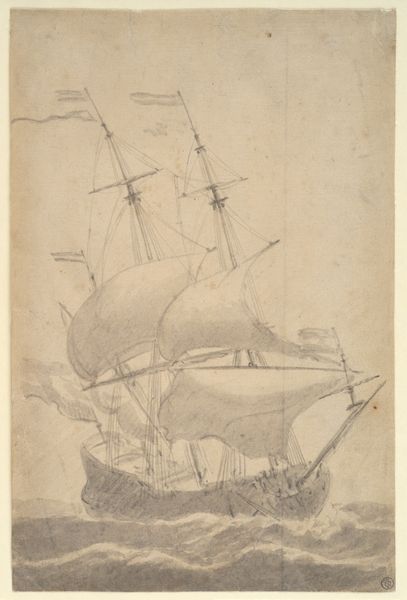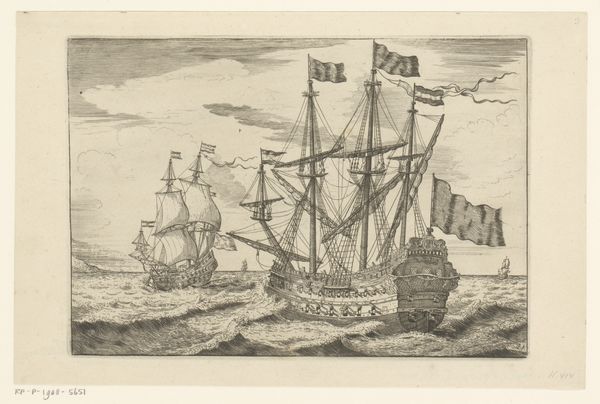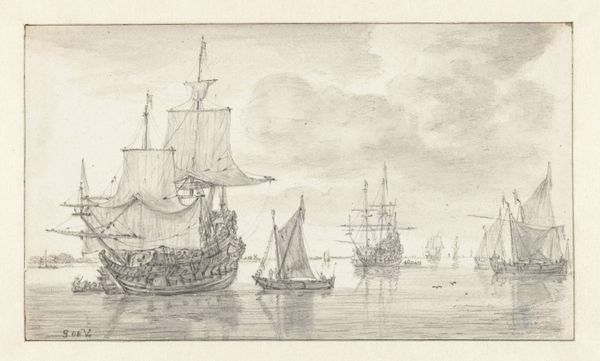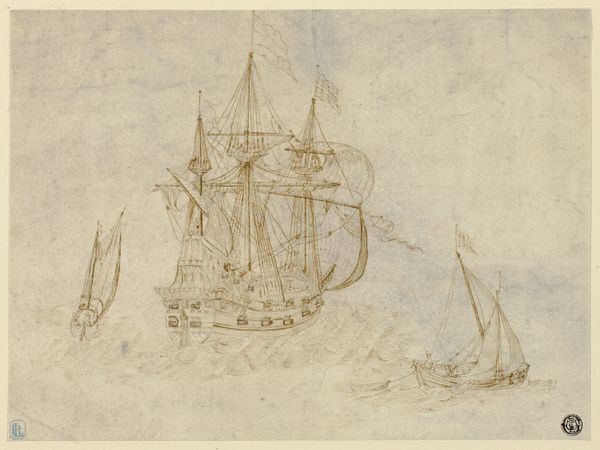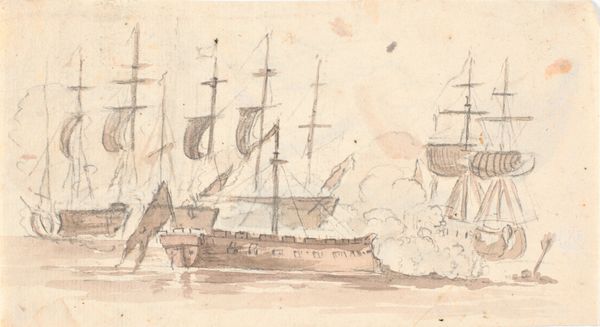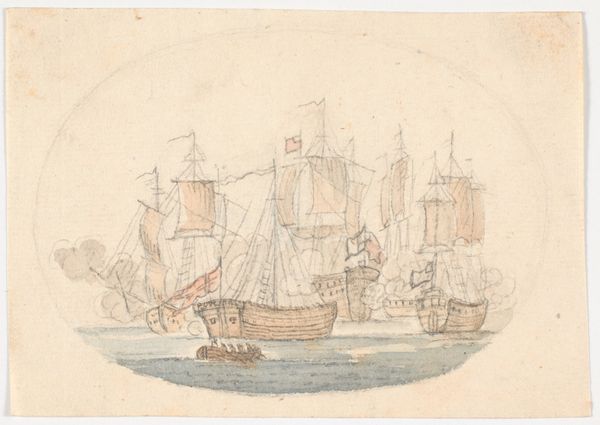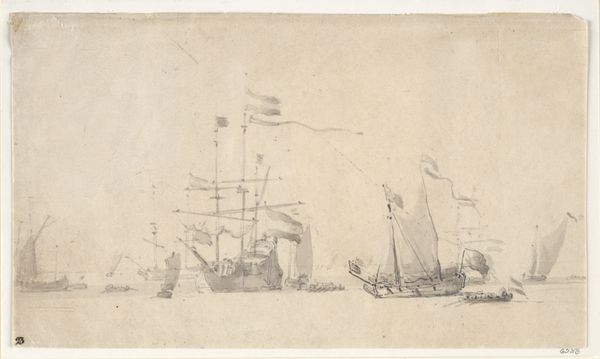
drawing, pencil, engraving
#
drawing
#
baroque
#
pencil sketch
#
landscape
#
etching
#
pencil
#
history-painting
#
engraving
Dimensions: height 275 mm, width 420 mm
Copyright: Rijks Museum: Open Domain
Curator: An arresting first impression—a tempest of spars and smoke, seemingly caught between sketch and substance. Editor: Yes, it possesses that raw, immediate quality. This is a pencil drawing entitled *Zeeslag bij Terheide, 1653*, which translates to "The Battle of Ter Heide, 1653," created by J. Plas in 1654, so almost contemporary to the event. Curator: It certainly feels immediate, doesn’t it? All that energy concentrated in those dense lines. Tell me, what's so significant about the Battle of Ter Heide that it warrants such a detailed… commemoration? Editor: This naval battle was a key moment in the First Anglo-Dutch War. Though tactically indecisive, it resulted in the death of the Dutch admiral Maarten Tromp, an event laden with symbolic and political weight, ensuring its place in Dutch collective memory. Plas immortalized the pivotal event on paper, illustrating the cultural and patriotic significance that the Dutch invested in the event. Curator: I notice the dominance of the smoke and the sea, almost overwhelming the ships themselves. Is this simply the artist's attempt at depicting the chaos of battle, or might there be a deeper meaning embedded in this near obfuscation? Editor: Perhaps it reveals how war overshadows even the most powerful ships. The baroque style emphasizes dynamic movement and drama, and Plas uses it to capture the event’s overwhelming nature. Consider how the light and shadow create a sense of turmoil and foreboding, a representation that certainly aimed to instill patriotic sentiment and solidify a specific interpretation of the naval encounter. Curator: It feels… incomplete, but intentionally so. A half-formed memory, struggling to surface. Maybe the ephemeral nature of the medium – pencil on paper - reminds us of the fragility of peace, the way even glorious victories fade into the grey of time. Editor: A fitting observation, it encourages us to look beyond the immediate action and contemplate the longer echoes of history. Plas presented an iconic moment, not simply depicting, but embedding cultural meanings and commemorative power. Curator: Indeed. It’s a potent reminder that images, like memories, are never truly fixed, and that cultural interpretations constantly transform the way we understand historical conflict.
Comments
No comments
Be the first to comment and join the conversation on the ultimate creative platform.
